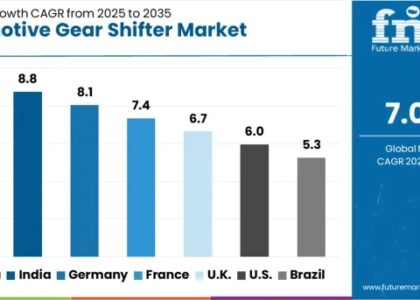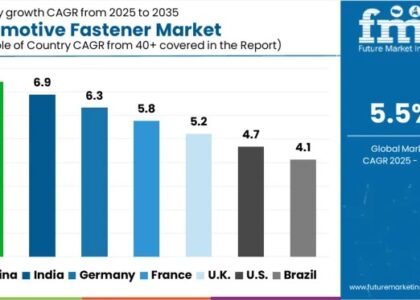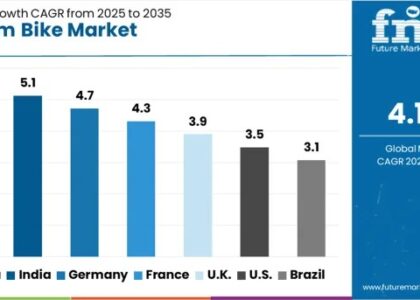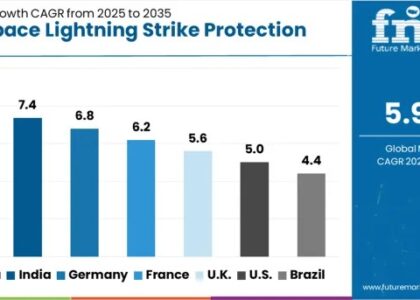The global lubricant packaging market is projected to exceed US$ 12.05 billion in 2023 and reach US$ 20.4 billion by 2033. Advancing at a CAGR of 5.4% during the forecast period. The market expansion is aided primarily by the rising demand for oil and gas worldwide.
The surge in demand for flexible packaging among various packaging industries due to its low cost and convenience is expected to fuel market expansion. Furthermore, flexible packaging goods are substantially lighter than rigid plastic bottles, contributing to market growth.
The volatile costs of raw materials utilized in the sector, particularly petrochemical feedstock prices, may impede the expansion of the market on the whole.
Get a Sample of the Report: https://www.futuremarketinsights.com/reports/sample/rep-gb-4228
The demand for lubricant packaging is likely to be dwindled by the environmental contamination created by plastic packaging forms. This may act as a hindrance to the need for lubricant packaging solutions.
The market for lubricant packaging is expected to experience significant development opportunities. Due to the rising leasing of lubricant packaging to small and medium-sized steel and metal companies in the GCC region.
Key Trends:
- Sustainable Packaging Solutions: The Lubricant Packaging Market is witnessing a significant trend towards sustainable packaging solutions. With increased environmental awareness and stringent regulations, manufacturers are adopting eco-friendly materials and designs to reduce their carbon footprint. This includes the use of recyclable materials, bio-based polymers, and innovative packaging designs that promote responsible disposal.
- Advancements in Packaging Technology: Continuous advancements in packaging technology are driving growth in the lubricant packaging sector. Smart packaging solutions, such as IoT-enabled packaging that provides real-time tracking and monitoring of lubricant conditions, are gaining traction. These technologies enhance supply chain efficiency, reduce waste, and ensure product quality, thus contributing to market growth.
- Rising Demand for Customization: As consumer preferences become more diverse, there is a growing demand for customized lubricant packaging solutions. Manufacturers are increasingly offering personalized packaging options to meet specific client needs, ranging from size variations to branding and labeling. This trend caters to the unique requirements of different industries and fosters brand loyalty.
- E-commerce Boom: The global rise of e-commerce has had a profound impact on various industries, including lubricant packaging. The convenience of online purchasing has led to an increased demand for lubricants packaged in smaller quantities suitable for individual consumers. E-commerce platforms also drive the need for robust and secure packaging to ensure safe transportation, contributing to the overall market growth.
- Focus on Product Safety and Compliance: Stringent regulations related to product safety and transportation, coupled with a heightened focus on compliance, are influencing the lubricant packaging market. Manufacturers are investing in packaging solutions that meet regulatory standards and ensure the safe handling and transportation of lubricant products. This emphasis on compliance not only meets legal requirements but also builds trust among consumers and stakeholders.
Growth Opportunities in the Lubricant Packaging Industry:
- Increasing Demand for Sustainable Packaging:
- As environmental concerns rise, there is a growing demand for eco-friendly and sustainable lubricant packaging solutions, creating opportunities for manufacturers to develop innovative, recyclable, and biodegradable packaging materials.
- Rising Industrialization in Emerging Markets:
- The expanding industrial sector in emerging markets presents a significant growth opportunity for lubricant packaging. Increased manufacturing activities and infrastructure development drive the demand for lubricants, consequently boosting the need for efficient packaging solutions.
- Advancements in Packaging Technology:
- Ongoing innovations in packaging technology, such as smart packaging and IoT-enabled solutions, provide opportunities for the lubricant packaging market. These technologies enhance product traceability, shelf life monitoring, and overall efficiency in the supply chain.
- Customization and Branding Opportunities:
- Manufacturers can capitalize on the demand for customized and branded packaging solutions. Offering unique and visually appealing packaging not only attracts consumers but also fosters brand loyalty in the competitive lubricant market.
- E-commerce Growth:
- The increasing trend of online purchasing and e-commerce platforms in the lubricant industry creates new avenues for packaging providers. Tailoring packaging to meet the specific requirements of e-commerce, including secure and leak-proof designs, is crucial for success in this segment.
Request Report Methodology: https://www.futuremarketinsights.com/request-report-methodology/rep-gb-4228
Market by Category
By Product:
- Engine Oil
- Transmission & Hydraulic Fluid
- Process Oil
- Metal Working Fluid
- General Industrial Fluid
- Gear Oil
- Greases
By Material:
- Metal
- Tin
- Steel
- Plastic
- Polyethylene
- HDPE
- LDPE
- Polyvinyl Chloride (PVC)
- Poly ethylene Terephthalate (PET)
- Polystyrene (PS)
- Polypropylene (PP)
- Polyamide (PA)
- Others
By End Use Industry:
- Automotive
- Metal working
- Oil & Gas
- Power Generation
- Machine Industry
- Chemicals
- Other Manufacturing
Author
Ismail Sutaria (Lead Consultant, Packaging and Materials) has over 8 years of experience in market research and consulting in the packaging & materials industry. Ismail’s strength lies in identifying key challenges faced by the client and offering logical and actionable insights to equip the clients with strategic decision-making power.
Ismail has been an instrumental part of several transformational consulting assignments. His key skills include competitive benchmarking, opportunity assessment, macroeconomic analysis, and business transformation advisory. Ismail is an MBA holder in Marketing and has a Bachelor’s Degree in Mathematics.
About Future Market Insights (FMI)
Future Market Insights, Inc. (ESOMAR certified, recipient of the Stevie Award, and a member of the Greater New York Chamber of Commerce) offers profound insights into the driving factors that are boosting demand in the market. FMI stands as the leading global provider of market intelligence, advisory services, consulting, and events for the Packaging, Food and Beverage, Consumer, Technology, Healthcare, Industrial, and Chemicals markets. With a vast team of over 5000 analysts worldwide, FMI provides global, regional, and local expertise on diverse domains and industry trends across more than 110 countries.
Contact Us:
Future Market Insights Inc.
Christiana Corporate, 200 Continental Drive,
Suite 401, Newark, Delaware – 19713, USA
T: +1-845-579-5705
For Sales Enquiries: sales@futuremarketinsights.com
Website: https://www.futuremarketinsights.com
LinkedIn| Twitter| Blogs | YouTube





